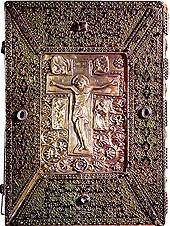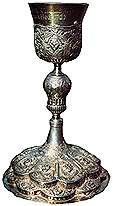|
||

| ||
 folk musik folk musik musical instruments musical instruments wood-carving wood-carving weaving weaving national costumes national costumes metal-work metal-work gunsmithing gunsmithing pottery pottery
 site's structure site's structure  home page home page
|
 By the start of the first millennium, people in the Bulgarian lands were already using iron along with bronze tools. Iron, a stronger metal, eventually replaced bronze in most farming tools. Iron-mining methods were also perfected. Major centres of metalworking emerged over the centuries, the best known among them being Samokov. The town is named after the enormous hammer-like water-powered device that blacksmiths used to beat the iron into shape - some of those devices have survived to the present day. Smithery remained the most popular craft since it was very closely associated with the livelihood and lifestyle of the Bulgarian people. A number of legends testify to the long popularity and importance of the craft. For instance, legend has it that Tsar Ivan Asen II (1218-1241) once ingeniously ordered fixing yhe horseshoes on the hooves of his army'shorses the other way round, and thus deceived the enemy and won a crucial battle.
By the start of the first millennium, people in the Bulgarian lands were already using iron along with bronze tools. Iron, a stronger metal, eventually replaced bronze in most farming tools. Iron-mining methods were also perfected. Major centres of metalworking emerged over the centuries, the best known among them being Samokov. The town is named after the enormous hammer-like water-powered device that blacksmiths used to beat the iron into shape - some of those devices have survived to the present day. Smithery remained the most popular craft since it was very closely associated with the livelihood and lifestyle of the Bulgarian people. A number of legends testify to the long popularity and importance of the craft. For instance, legend has it that Tsar Ivan Asen II (1218-1241) once ingeniously ordered fixing yhe horseshoes on the hooves of his army'shorses the other way round, and thus deceived the enemy and won a crucial battle.Along with geometrical decaration, artisans used floral motifs. However, animal figures - mostly horses, birds and serpents - were their greatest achievement.
Byzantine chroniclers note that in plundering the capital of the first Bulgarian Empire, Pliska (811), Emperor Nicephorus I (802-811) gave his men copper from the treasure of Khan Kroum (803-814). Archaeologists have found many copper vessels and weapons. The towns of Chiprovtsi, Plovdiv, Skopie and Veliko Turnovo were centres of copperwork. The craft flourished in the 17th to 19th centuries. Various household utensils from this period - coppers, braziers, basins, jugs, bowls for holy water and others - are amazing masterpieces of decoration.
 The vessels were embossed, engraved and exquisitely carved. Along with the intricate floral and geometrical patterns, the master, the master craftsmen depicted human and animal figures, and even scenes from the Bible.
The vessels were embossed, engraved and exquisitely carved. Along with the intricate floral and geometrical patterns, the master, the master craftsmen depicted human and animal figures, and even scenes from the Bible.The various alloys for bells for the livestock took just as much skill to make. The craft reached perfection in the bells in the Rhodopi Mountains which resounded across the mountain from early spring to late autumn, raising people's spirits and hope. The master craftsmen of yore jealously guarded their secret and novices had to find their own alloy to make a bell sound right. The craft was held in high esteem, as surviving surnames show: Chandjiev, Tyumbelekov, Zvunarov, all of which are synonyms of "Bell."
Gunsmithing developed in more recent times. The craft flourished in towns like Sliven, Gabrovo and Madan in the 18th and early 19th century. Bulgarian gunsmiths were so good that merchants from all over the Ottoman Empire and as far away as Persia came to buy their barrel guns, rifles, pistols and other wares.
